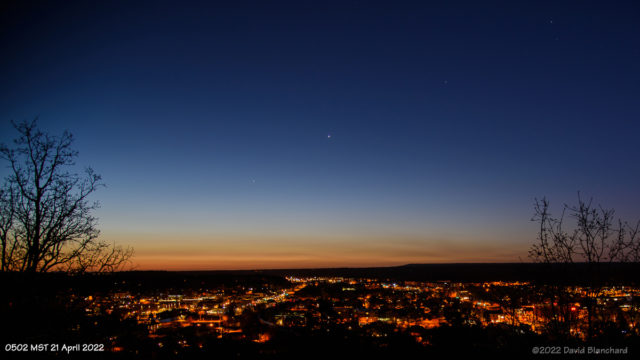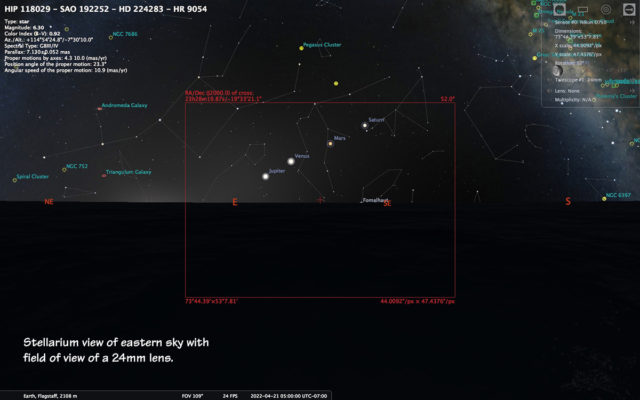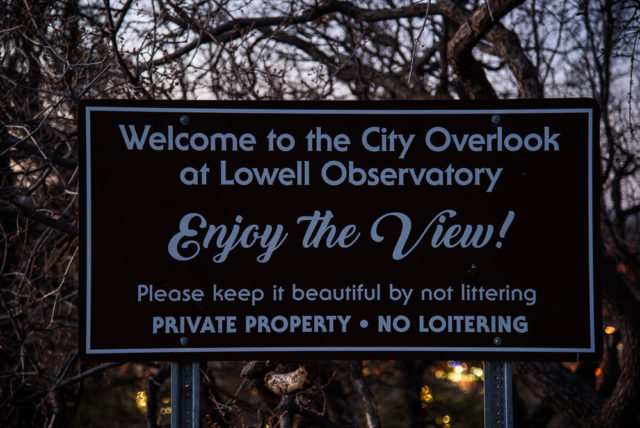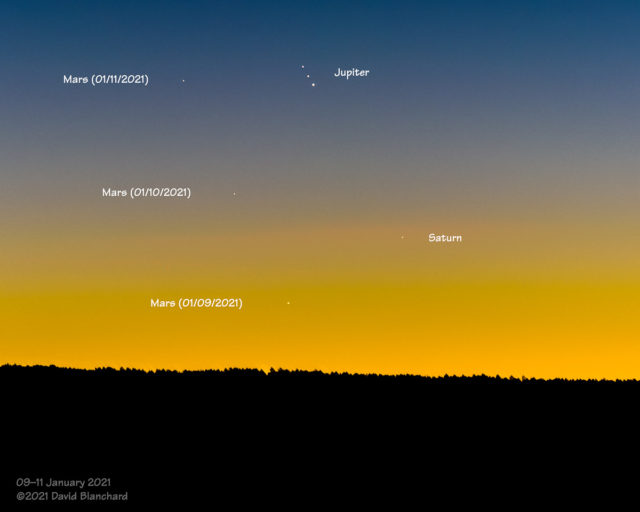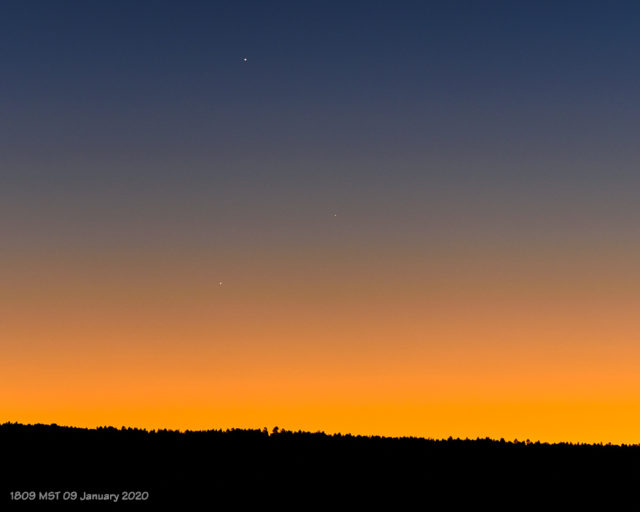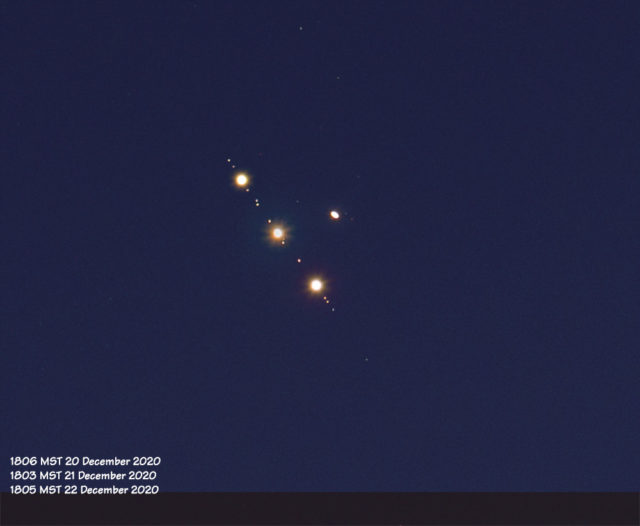There are currently four planets easily visible in the morning sky: Jupiter, Venus, Mars, and Saturn. Prevously they had been fairly evenly spaced and in a line sloping upward from the east to southeast. Now, however, Venus is quickly moving lower in the sky towards Jupiter and they will pass by each other in a few days. In the meantime, the crescent Moon joined the planetary quartet this week.

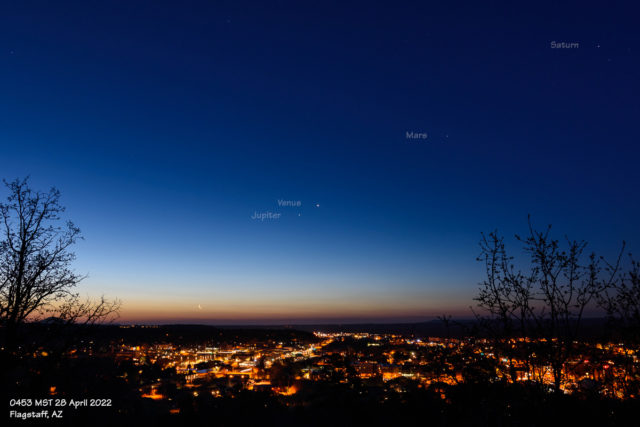
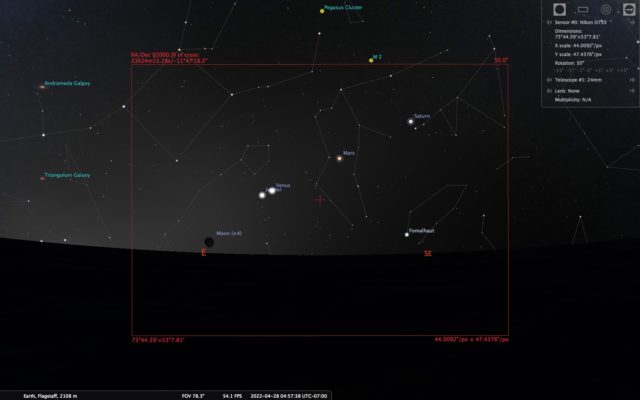
Here is an image from 0453 MST 28 April 2022. The Moon was partially obscured by smoke low on the horizon from western wildfires. Also shown is a screen shot from Stellarium showing the four planets and Moon with an overlay of the field of view from a 24mm lens.
